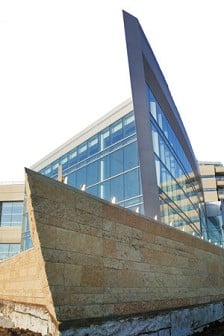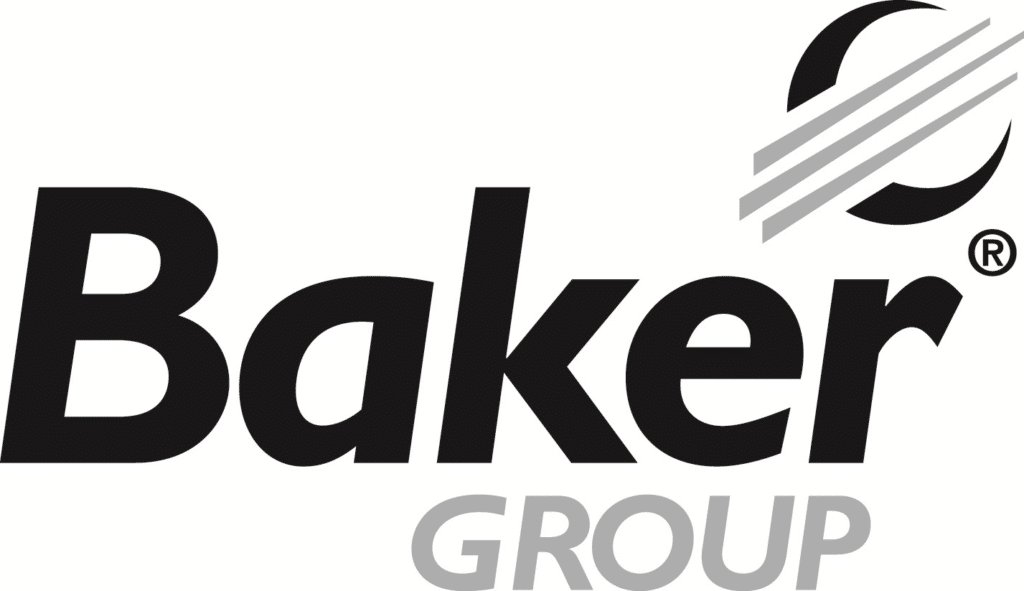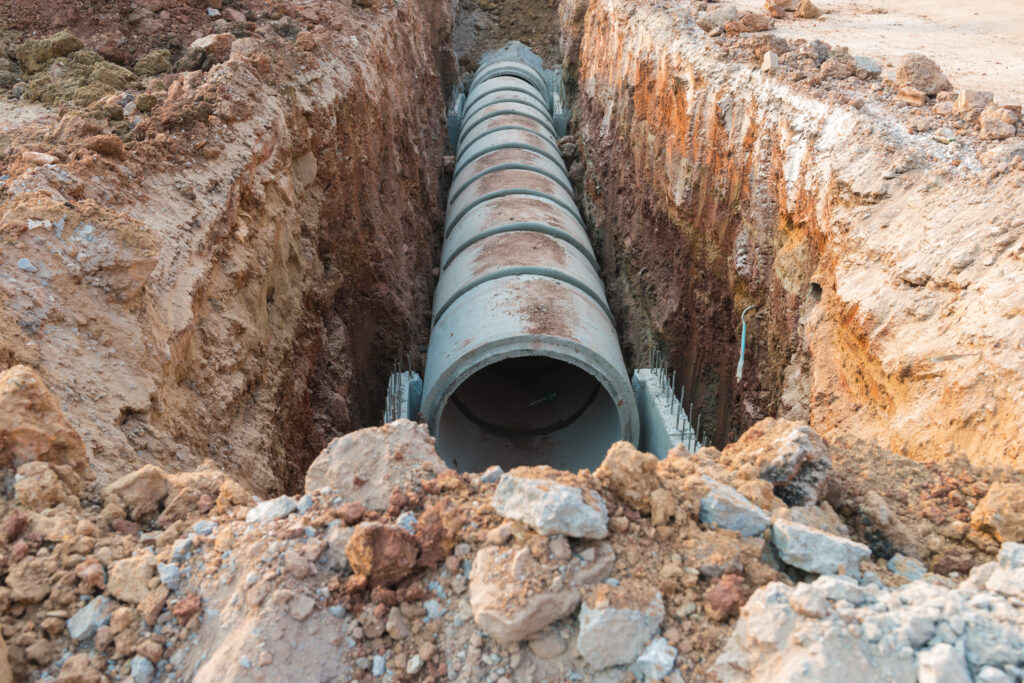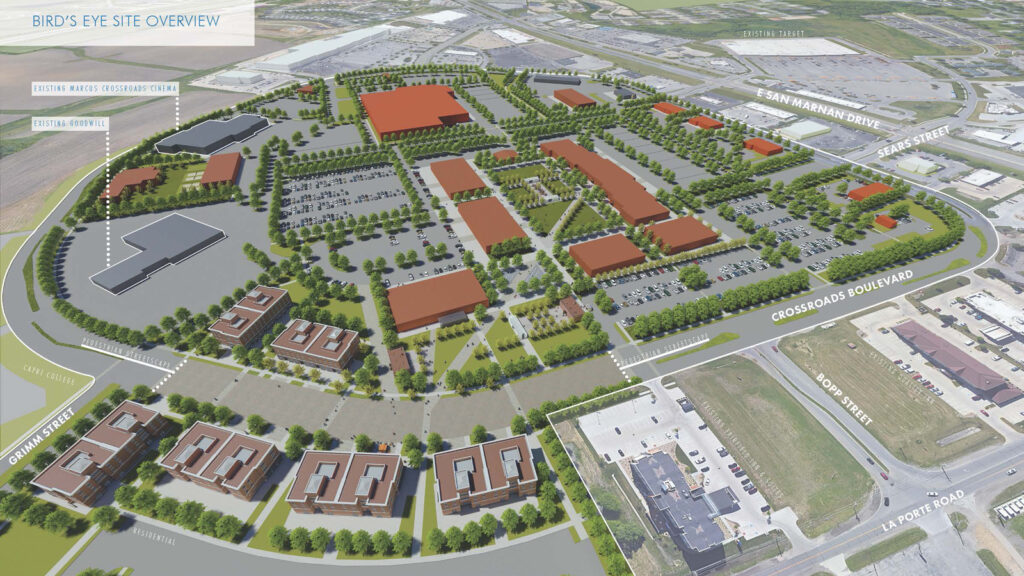Seeing is believing that design dreams can come true

In downtown Des Moines – or Kansas City, Mo., or Omaha or Manhattan – what you see is what Architectural Wall Systems Co. (AWS) delivers.
The West Des Moines company has been hanging the skin on buildings in Iowa and across the country since 1991, when it was founded by Mike Cunningham, a former wall products salesman with a knack for knowing where to find custom materials for unique buildings.
Among his discoveries was something called a rain screen, which was common in Europe but virtually unknown in the United States when he had one delivered and installed at EMC Insurance Group Inc. headquarters, said Des Moines architect Bill Anderson, who headed up the building’s design team.
Anderson turned to Cunningham and Architectural Wall Systems (AWS) when the company said it wanted a structure that would last 100 years.
Cunningham is described as a shy, hard-driven bulldog of an individual whose company offers the “can do” to the most fanciful, maybe boisterous, architectural designs.
“We take their aesthetic and performance goals and help them bring their design dreams to reality,” said Tom Schlotfeldt, who joined AWS eight years ago as chief financial officer and has been president for the last six years.
Even though the company has “suffered” because of the Great Recession, Cunningham said, its annual revenues run between $30 million and $40 million.
AWS got its start in Greater Des Moines – the Western Gateway shimmers with its walls, including the stone and glass of Wellmark Blue Cross and Blue Shield, the Des Moines Central Library and the John and Mary Pappajohn Education Center – but it has built a reputation with designers and contractors across the country.
Among walls erected by its crew of union iron workers and glaziers are those at Kansas City, Mo.’s Sprint Center and the Kansas City Star, Apple Inc.’s flagship retail store in Chicago, the Walter and Leonore Annenberg Center for Information Science and Technology at the California Institute of Technology in Pasadena, Calif., and Princeton University’s Sherrerd Hall, a glass cube that reflects the campus and the neighborhood around it.
Cunningham takes little credit for AWS’ success and reputation for delivering complicated, one-of-a-kind building skins or envelopes, as they are also called in the industry.
He does have a straightforward philosophy, one that he expects the company’s 35 architects and engineers and up to 150 iron workers and glaziers to abide by.
“We all work for the success of the field to deliver to the owner the wall that he purchased,” he said. “Every step of the process and every employee knows that if they aren’t solving all of the technical issues to deliver it to the field so it can be installed, then they won’t be here long, because that is what we do.”
The progression from selling products to leading a 20-year-old business had a simple beginning, Cunningham said.
“From 1974 to 1991, I worked for somebody else, then I started my own business,” he said.
That somebody else was engineer Greg Gentleman, who was a key influence on the construction of 801 Grand, headquarters of Principal Financial Group Inc. and the state’s tallest building.
“He was a genius and an MIT engineer, and that’s how we were able to take it to the next level,” Cunningham said. “He was my mentor. He had the capabilities of designing custom stuff.”
When Gentleman was ready to retire, Cunningham was ready to move. He wanted a company that not only delivered the products, but was involved in every step of design and construction.
“We were recommending that the envelope be provided by a single source – us,” Cunningham said.
Cunningham had the vision, but as with many things about AWS, he credits other people for the company’s success.
“For some reason, Des Moines just goes state of the art,” he said. “There are progressive people here, progressive thinkers.”
Kelly Portz is Cunningham’s stepdaughter and the company’s marketing director. She shares his thoughts about the local construction industry.
“We have a very progressive architectural community in Des Moines, just basically the state of Iowa,” she said. “We have architects who are very thoughtful in their design, not only from an aesthetic standpoint. They are always looking for better systems, because from a thermal standpoint, we have some vicious swings. We have very tough winters and very tough summers, and on a building envelope that can be pretty tough.”
Architects passing through town to design structures such as the Des Moines Central Library, remember the service they received from AWS.
London-based David Chipperfield Architects was the lead designer on the library, and when the firm designed an addition to the Anchorage Museum at Rasmuson Center in Alaska, it turned to Cunningham’s company.
AWS is credited with the custom design and construction of the aluminum louvers on the exterior of the New Meadowlands Stadium in East Rutherford, N.J., home to the New York Jets and New York Giants professional football teams. That job was the result of work the company did on the Sprint Center in Kansas City.
One of the services AWS provides is a complex testing method that makes sure the envelope is impervious to moisture infiltration and can withstand seismic shifts.
Much of the testing is done at a laboratory in Miami, where replicas of a building are constructed at an average cost of $350,000.
They are shaken and rattled by hydraulic jacks, subjected to torrents of wind and water, thumped by airplane turbines. They are allowed to bow and bend, and when they are set back in place, AWS wants to know that everything is intact.
Anderson, the architect who worked with AWS on the EMC building and others, said it is attention to detail and Cunningham’s tenacity that have helped the company prosper.
“I’ve got to hand it to Mike. He has a lot of courage to do what he did to get his company going – working in the construction industry is not easy. A lot of things can go wrong,” Anderson said. “I don’t know anybody in the business who knows more about the curtain wall industry.”
Cunningham will turn 60 this year and he is in the process of turning the company over to new leadership. He is exploring the possibility of converting to employee ownership.
Cunningham has no regrets about walking away from a company he built from scratch.
“They don’t need me as much as they think they do,” Cunningham said. “There are certain things that I do to keep things focused, but Kelly and Tom do a lot of the heavy lifting.”











